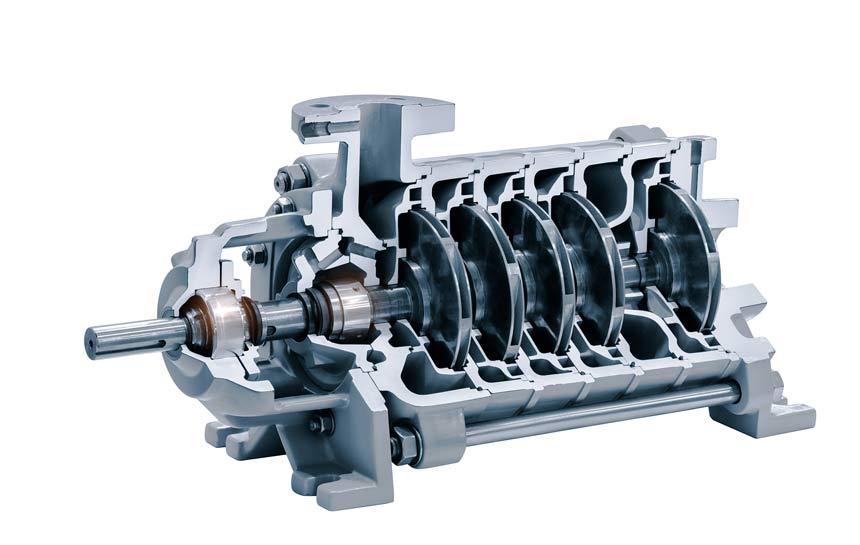Homes require effective distribution of water with fixed and sufficient pressure to taps, toilets, showers and other plumbing fixtures. Water can flow to a building’s top floor with the help of booster pumps which increase the water pressure. There are various ways to achieve high water pressure, including installing a water booster pump. Below you can find information about when you need a booster pump, what kinds they are and how to perform an effective booster pump installation for your application.
Signs You Need a Booster Pump
A booster pump is used to increase the pressure of the water entering your home. The most probable reason to install a booster pump is simply low water pressure. Although booster pumps can help increase water pressure, lower pressure doesn’t necessarily mean lower source pressure.
A common reason is associated with town or city water houses. If your house is connected to a town or city water supply, your water pressure will be affected by the number of houses on the same line. As you use water from city or city pipes, your water pressure is more likely to be affected. You may need to check into a water pressure booster pump.
If you’re not sure whether you need a water pump for your home, it’s important to first consider the signs of low water pressure in your home. Make sure you’ve ruled out all other possible causes, then consult a professional to see if the pump can help fix the problem.

Different kinds of Booster Pump
There are two primary types of booster pumps:
1. Single-stage Pump
This pump, as the name suggests, simply increases the pressure of water in one step in single-family homes or multi-family homes with moderate pressure demands. In a single-stage pump, the liquid pressure is increased by an impeller. Less efficient than multi-stage pumps, but takes up less space.

2. Multistage Pump
Multi-stage booster pumps are suitable for very high-water pressures. Such applications include pumping water uphill and into multi-building residential areas, maintaining water pressure in cities, and transporting water in very long pipelines. To pressurize the fluid, this pump uses many stages. Each stage of this pump has its own impeller. The Fluid is pumped through a number of impellers.

As low pressure and low flow can have many causes, make sure none of the following are causing the problem before installing the water booster pump:
• Clogged Pipes: It is common in older residents.
• partially closed shut-off valve: Simply open it fully.
• Peak Demand: It is a temporary situation.
• Undersized pipes: It is due to poor plumbing design which has the same impact as clogged water pipes.
• A leak: Check all piping, fixture, and valves for leaks.
If any of these reasons are suspected of causing low water pressure, installing a water pressure booster pump will actually damage the existing plumbing system. So, if you’re unsure about having low water pressure, don’t hesitate to call our teams for pump service to verify that you don’t have piping issues.
Booster Pump Installation
The first step is deciding where you want to install the booster pump. Booster pumps are installed where water needs to be moved. For example, a house with low water pressure should have a pump installed on the main line where the water enters the home. Therefore, the location of the water booster pump is also very important.
• In the main line, booster pumps can keep working. Anywhere there is water in your home, the booster pump will operate, putting pressure on your pipes. As a result, there is some waste in use.
• The water booster pump is installed in front of the water supply system and the booster pump only works during water consumption.
The best place to install the booster pump is usually right next to the main water shutoff.
Here are some key steps to help you understand the booster pump installation process. If you need help in choosing and installing a water booster pump, then give us a call at Proplumber.Uk
- Close the main water valve located at the meter.
- Drain existing water from all plumbing. Just turn on the bottom faucet in the house until it runs dry.
- Use a pipe cutter to cut the section of pipe needed to install the booster pump.
- Assemble the copper pipe and fittings needed to connect it to the pre-existing water supply pipe.
- To remove any leftover water, simply turn on the top faucet in your home.
- Install any piping unions needed for your pump installation.
- slowly turn back on the water at the main shutoff.
- Check the pressure gauges to see the increased water pressure once the pump goes off.
Increasing the Efficiency of Booster Pumps
To save energy, the booster pump is connected to a variable frequency drive (VFD) for speed control. There are several reasons why it makes sense to use speed control for booster pumps.
• Required pressure increase may vary depending on actual building conditions.
• Pressure fluctuations can also be caused by power companies.
• Use a variable frequency drive (VFD) to soft start the hydraulic booster pump to prevent inrush current, typically 5-8 times the rated current. Without a soft-start device, this inrush current can cause a sudden voltage drop.
Final Thoughts
Booster pump installation improves water flow to all plumbing fixtures and equipment. Different sizes of water booster pumps are installed depending on the size of the building, but the purpose remains the same: to supply water to all plumbing fixtures at the same pressure. To help you solve your water pressure problems, our professional plumbers offer pump service in your home. To get a booster pump installed in your house, call or contact us online right away!
